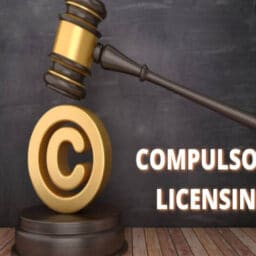Introduction
Drug abuse, also known as substance abuse, is a disorder marked by extensive use of habit-forming medicines and exploitation of over-the-counter medications, as well as illegal drug usage, all of which lead to catastrophic addiction and reliance, as well as a slew of bad consequences. Addiction to drugs is a chronic disease with recurrence rates comparable to hypertension, asthma and diabetes. It also refers to the employment of specific substances to produce pleasant possessions on the brain. Around 190 million population use drugs worldwide, and the problem is intensifying at an unprecedented degree, particularly among fledgling individuals under thirty. In addition to the long-term devastation that the consumption of drugs causes, drug users who use syringes are at huge threat of getting contracted HIV and hepatitis B and C infections. The bulk of abuse drugs are mind, mood or other mental processes affecting narcotics that individuals use under a range of motives, including:
Inquisitiveness and societal pressure are common, predominantly amid teenagers especially. Pharmaceutical drugs that were designed to help with discomfort may have turned into a recreational pastime and become addicted. Chemicals are frequently made in use in ecclesiastical customs and rituals. Drugs are associated with crime in a number of ways. To put it another way, it’s prohibited to use, possess, create, or sell chemicals that might be misused. Cannabis, morphine, tobacco, and methamphetamine are just a few examples of substances that may be misused. Drugs are associated with violence because of their effects on the behaviour of a user, over and above the notion that they bring into existence bloodshed and other prohibit behaviour in the framework of narcotics merchandising.
Prescription Drug Abuse
Prescription drug addiction is on the ascend in India, and it is an austere pertain in South Asia. According to a UN assessment, medications are trafficked into Afghanistan through various routes after being siphoned from India’s pharmaceutical business. In its annual report, the International Narcotics Control Board (INCB), an independent UN organization assigned to analyzing the consumption and production of narcotics around the world, stated that governments in South Asia continue taking robust measures to combat drug trafficking and abuse. According to the United Nations Office on Drugs and Crime (UNODC), India produces 10% of all medications worldwide.
The regulation prohibited all pharmaceuticals with “abuse potential” to be sold exclusively on prescriptions, according to the research, yet there was “substantial diversion.” As per a poll conducted by the Delhi Commission for the Protection of Child Rights on Substance Abuse by Children, 90 % of children were in legal trouble, 94% of adolescents in child care facilities and 93% of youngsters in urban areas were drug users. According to the report, “peer pressure” drove 83% of the youngsters to take drugs.
The existing three-prolonged strategies to address the drug problem
India has the responsibility and pressure to abolish the use of illicit drugs, establish measures to halt the usage of drugs and ensure the availability of treatment for those with narcos dependence, as mentioned in its constitution (Article 47) and as one of the signatories to the United Nations’ International Conventions. The three-pronged tactics of supply, demand and harm reduction have been implemented in India. Following the United Nations Convention on Psychotropic Substances of 1971, India’s Ministry of Health and Family Welfare established an Experts Panel to investigate the issue of narcos and liquor abuse in the country. The Committee’s report was submitted in 1977, and the Drug De-addiction Program (DDAP) was implemented in 1985-1986 after receiving permission from the Planning Commission. The DDAP’s main goal was to reduce drug demand. India had adopted the Narcotic Drugs and Psychotropic Substances (NDPS) Act in 1985, which has been revised three times, the most recent in 2014.
The NDPS’ main goal was to “prevent and combat drug misuse and illicit trafficking,” with a clear focus on supply reduction. In 1988, the consultative group (an advisory council established under the NDPS Act) devised a national programme to combat drug misuse. The committee established the National Fund for Drug Abuse Control and enlisted the help of a few other key partners, including the Ministry of Health (and Family Welfare) and the Ministry of Welfare (currently Social Justice and Empowerment). The Ministry of Health was tasked with the treatment and prevention of drug addiction, while the Ministry of Welfare was tasked with the recovery and social integration of persons who were addicted to drugs. During the first stage, the Ministry of Health created seven treatment programs (in 1988).
The goals of these centres were to provide therapy, develop instructional materials, and train medical and nursing professionals to cope up with the misuse of drugs in the future. A one-time payment was also given to 122 De-Addiction Centres (DACs) of various psychiatric departments of government medical institutions and regional hospitals under the DDAP. Several non-governmental organisations (NGOs) across the country were financed by the Ministry of Welfare to create counselling services and DACs with the goals of community awareness, treatment rehabilitative services, and human resource development. Following that, the Ministry established ten Regional Resource and Training Centres (RRTCs) to mentor, train, as well as cater technical assistance to a variety of different non-governmental organisations. The National Institute of Social Defense oversees the activities of RRTCs.
There has been a significant expansion of services in all aspects over the previous three decades. In 2013, the Ministry of Social Justice and Empowerment released the National Drug Demand Reduction Draft Policy, a draught policy for reducing drug consumption. The ‘Central Sector Scheme of Assistance for Prevention of Alcoholism and Substance Abuse and Social Defence Services,’ launched by the Ministry, aims to ramp up existing programs. In 2018, the Ministry of Social Justice released its five-year strategy, titled “National Action Plan for Drug Demand Reduction.”
Currently, there are about 400 non-governmental organisations (NGOs) operating as Incorporated Rehabilitation Centres for Addicts throughout the country. The DDAP has also expanded its scope to include the newly created Drug Treatment Centres, in addition to the former DACs (DTC). These are the hospital parts where a specialist facility with a professional delivery by the staff of ambulatory care drug misuse rehabilitation, which is given at no cost. In 2005, the harm minimisation element was expanded to include low-threshold, community-based morphine substitution treatment. (OST). The Department of International Development initially funded it until 2007, when it was passed over to the Ministry of Health and Family Welfare. The OST and Injectable Syringe Exchange Programs were run by the National AIDS Control Organization (NACO) as part of the aimed therapy (NSEPs).
Drug Abuse: Current and Future Challenges
The Ministry of Social Justice and Empowerment has performed two nationwide drug surveys in the previous three decades (after the start of the NDPS), which were released in 2004 and 201918,19. According to the findings of these polls, drug use in India is on the rise. Usage of opioids has risen from 0.7% in the prior report to a little more than 2% in this one, bringing the total number of people using opioids from 2 million to more than twenty-two million. Worse, heroin has surpassed natural opioids (opium and poppy husk) as one of the most widely abused opioids.
The National Mental Health Survey (2015-2016) revealed a treatment gap for substance use disorders of more than 70%. The conclusion was confirmed in a recent national study on substance abuse problems, which revealed a roughly 75% treatment gap for substance abuse disorders. To make matters worse, just 5% of the population with illicit drug usage disorderliness obtained inmate treatment. This high gap in treatments shows that health care is inaccessible, underutilised, and of poor quality. To satisfy this unfulfilled need, rehabilitation and treatment facilities for substance use disorders should be expanded.
The three-pronged approach’s harm minimisation arm needs strengthening even more. In spite of significant progress by the NACO and the GO-NGO model, only 7% of IDUs have access to the OST. It urges for the OST to be scaled up in a safe and competent manner. The NSEP is prohibited under the NDPS policy, despite the fact that it is one of the foundations of harm reduction performed by the NACO. The NDPS policy also pushes for a time-limited OST, which lacks scientific support and may cause additional harm (than good). This time-limited OST strategy could be replaced by recovery-oriented OST. These policy inconsistencies and flaws must be addressed.
The early diagnosis and categorization of novel psychoactive drugs are present and hereafter difficulties in the arm of half-reduction. The International Narcotic Control Board (INCB) recently produced research that demonstrated India’s vulnerability to mephedrone and captagon (a derivative of amphetamine and theophylline). The country’s real issue with precursor chemicals was also mentioned in the report. Furthermore, the quick expansion of web-based drug stores and bitcoin-based exchanges for illegitimate drug usage in India has been highlighted with concern. The exploitation of over-the-counter drugs with known addictive properties (for example, benzodiazepines, tramadol, and codeine) or a potentially addictive potential (e.g., benzodiazepines, tramadol, and codeine) is another issue of concern, voiced by the international forum.
Conclusion
In ratiocination, Our country has made proactive and legitimate actions for solving its drugs-related issues. In spite of the fact that our higher authorities have an all-encomium framework, an entirely devoted workforce, and a number of committed policies and programs at its discretion, A requirement is needed to upgrade present curriculums (to bring light to lacking needs), to coordinate efforts between Ministries, to achieve policy homogeneity, for making methodically intercommunicated decisions, and to enhance chains of supply reduction.
Author(s) Name: Nishant (Manikchand Pahade Law College)















